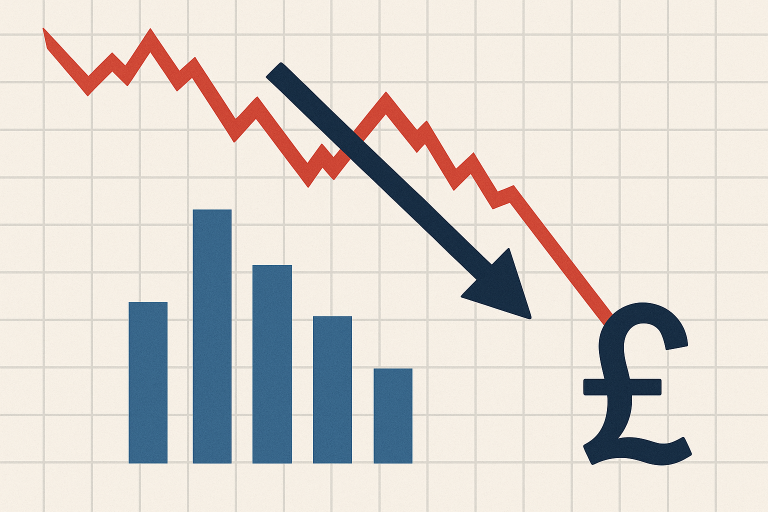The latest UK labour market report presents a multifaceted signal of economic deceleration.
A discernible increase in the unemployment rate, coupled with declining payroll employment and subdued wage growth, is leading market participants to recalibrate expectations for monetary policy.
With the Bank of England’s next interest rate decision looming in December, traders are now leaning more decisively towards a cut.
As fiscal tightening and structural shifts in employment persist, the evolving macroeconomic conditions are positioning the labour market as the pivotal determinant in shaping the central bank’s response.
Unemployment rate signals structural strain
The Office for National Statistics reported that the unemployment rate in the UK rose to 5.0% in the three months to September.
This marks the highest level since the early months of 2021, when pandemic-related constraints significantly disrupted economic activity. The increase exceeded forecasts, with economists anticipating a smaller rise to 4.9%.
Simultaneously, payroll employment experienced a contraction. HMRC tax data revealed a reduction of 32,000 payrolled employees in October, mirroring the revised decrease from the prior month.
Since the fiscal tightening implemented in October 2024, the cumulative loss in payroll jobs has reached 180,000.
The number of unemployed individuals per job vacancy, a metric often used to assess slack in the labour market, reached 2.5 during the July to September period.
This is the highest ratio observed since 2015, indicating an expanding labour surplus despite marginal gains in vacancy postings.
Private-sector wage deceleration confirms softening demand
Wage dynamics reflected further moderation in nominal earnings. Private-sector pay growth slowed to 4.2% in the reported period, down from 4.4%, consistent with market consensus and marking the weakest level since early 2021.
This trend was supported by internal Bank of England business surveys, which showed that nearly half of firms responded to increased employment taxes by reducing headcount.
Only 17% chose to cut wages, suggesting that employment adjustments are the primary mechanism of cost control.
Despite current softness, firms reported forward-looking wage expectations of 3.7% for the next year in the three months to October.
This was a slight increase compared to the previous month, implying that while current wage pressures are receding, future expectations remain anchored above historical norms.
Market repricing accelerates amid monetary policy recalibration
Investor sentiment shifted sharply following the employment data. Market pricing now reflects an 80% probability of a Bank of England rate cut at its upcoming meeting on 18 December.
This is a notable increase from 68% the previous day. Sterling weakened against the dollar, declining by as much as 0.4% to $1.3121.
The Monetary Policy Committee previously held the Bank Rate at 4.0% in a narrowly split vote of 5 to 4.
The bank’s decision calculus is also being influenced by broader fiscal variables. The Autumn Statement, scheduled for 26 November, will be a critical event.
Chancellor Rachel Reeves is expected to propose new tax measures aimed at addressing budgetary shortfalls, potentially exerting further downward pressure on household demand and inflation.
Tax policy compounds labour market weakness
The employment contraction observed since October 2024 has coincided with the implementation of increased employer payroll taxes.
The first Labour budget under Chancellor Reeves appears to have had a disinflationary effect by disincentivising labour demand, with widespread firm-level employment reductions.
If the forthcoming budget introduces additional taxation aimed at households, it may constrain consumer expenditure further, thereby dampening inflationary momentum.
Such developments could provide additional justification for a monetary policy pivot, especially as labour market softness accumulates.
The upcoming GDP report, due Thursday, will offer the first estimate of third-quarter economic output. Alongside the labour data and fiscal developments, it will inform the central bank’s final policy decision of the year.
The convergence of these variables makes the December meeting one of the most consequential in recent memory.
The post UK unemployment hits 4-year high of 5.0%, fuelling bets on BoE rate cut appeared first on Invezz

